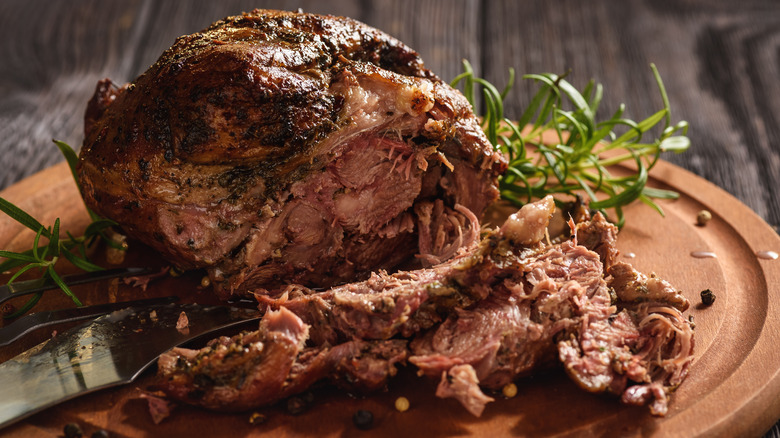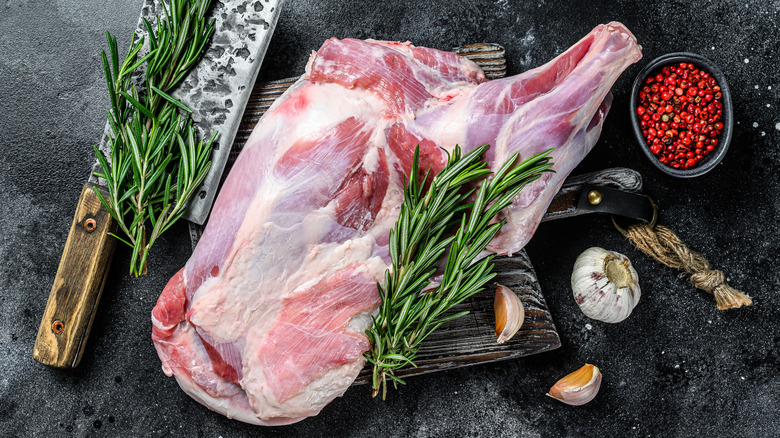The Best Way To Roast A Fattier Cut Of Lamb
Though not nearly as popular as beef, chicken, or pork, lamb is nevertheless one of those meats that any carnivore should roast at least once in their lifetime. Like other varieties of meat, lamb has both lean and fat cuts. While both can be excellent for roasting, the fattier cuts are going to yield some truly amazing flavor, provided you have the patience to see the roast through.
In order to extract the mind-bending flavor of the fattier lamb cuts, you need to employ the low and slow roasting method. That is, roasting the lamb at a low temperature for a long period of time in order to gently coax out those amazing flavors. Like beef, lamb is best when cooked medium rare.
There should be some pink still in the center and the meat should be tender and juicy. To achieve this with fattier cuts, keep the oven temperature no higher than 325 degrees Fahrenheit. To get that medium rare doneness — an internal temperature of 125 degrees Fahrenheit — the lamb should be cooked for 30 minutes per pound.
What are the fattier cuts of lamb?
While it's all well and good to know how to roast the fattier cuts of lamb, you'd probably want to know what those cuts are in order to make the right choice the next time you're hunting down meat for a Sunday roast. While the leg and ribs are certainly the most popular and expensive to roast, they are hardly the fattiest part of the sheep. That title is shared equally between the lamb shank and the lamb shoulder roast.
The shank benefits from the low and slow cooking method because it is tougher meat. This is due to the shank being cut from one of the harder-working parts of the animal. However, as its fat and sinews are allowed to gently render in low heat, they moisten and flavor the meat, making it fall-off-the-bone tender.
The shoulder roast is another tougher cut that is probably the most forgiving you will ever encounter. Because it is so unbelievably fatty, it is almost impossible to dry out the meat. It remains tender and juicy when cooked for long periods of time, as the fat melts and renders throughout. The shoulder roast is also far less expensive than a leg of lamb or a rib roast, providing you with more meat and flavor for your hard-earned dollars.

